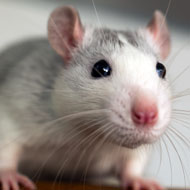Avian flu hit six seabird colonies in 2023, National Trust reveal
The contagious disease only affected one colony in 2022.
The National Trust has revealed a significant increase in avian influenza amongst its seabird colonies this year.
The conservation group said that six of its seabird colonies were infected by the contagious disease during this year’s breeding season, compared to only one colony in 2022.
In 2022 an avian influenza outbreak on the Farne Islands, off the coast of Northumberland, led to 6,000 birds dying.
This year the spread of the deadly disease at this colony was nearly halved, as a result of rangers completing regular pick-ups of dead birds and the decision to close the islands to visitors.
Farne Islands still saw significant losses from its bird colonies, with 970 dead kittiwakes being collected and 905 large gulls.
However the outbreak also hit five other seabird colonies across the country:
• Long Nanny, Northumberland
• Cemlyn, Anglesey, north Wales
• Pembrokeshire, south Wales
• Brownsea Island, Dorset
• Groomsport, Northern Ireland
The hardest hit colonies were Farne Islands (3,647 dead birds), Long Nanny (1,358 dead birds) and Cemlyn (1,267 dead birds).
The outbreak also resulted in birds dying in Brownsea Island (650 dead birds), Pembrokeshire (201 dead birds) and Groomsport (21 dead birds).
Only one National Trust site, Blakeney Point in Norfolk, appeared to have been unaffected by the disease, seeing a successful breeding season for its terns.
There are no definite measures that can be taken to prevent these cases, however the group will be continuing to reduce pressures on breeding birds.
This includes keeping Farne Islands closed to visitors whilst rangers deal with the impacts of the disease and continue habitat management to ensure good breeding conditions.
Ben McCarthy, the head of nature, conservation and restoration ecology at National Trust, said: “It is apparent that this disease is likely to remain shifting from species to species and we must swiftly develop a coordinated approach to monitoring and implementing conservation measures across national governments, statutory agencies, researchers and conservation organisations to stand any chance of protecting our important populations of seabirds.”
Image © Shutterstock






 The Greyhound Board of Great Britain has published new vaccination guidance, with all greyhounds registered from 1 January, 2027 required to have the L4 leptospirosis vaccination, rather than L2.
The Greyhound Board of Great Britain has published new vaccination guidance, with all greyhounds registered from 1 January, 2027 required to have the L4 leptospirosis vaccination, rather than L2.
